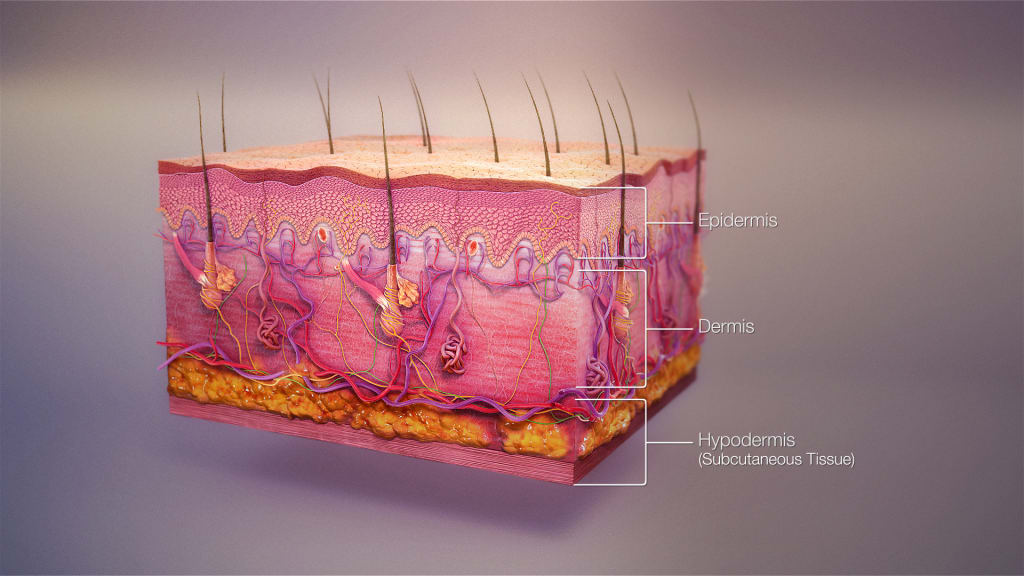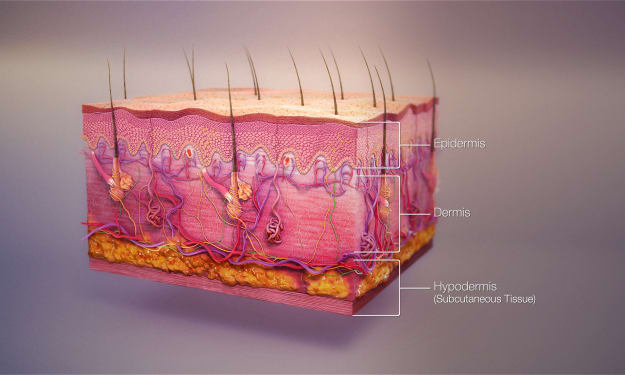Do our skin have these ???
The Integumentary System: Unveiling the Marvels of Skin, Hair, and Nails

Title: The Integumentary System: Unveiling the Marvels of Skin, Hair, and Nails
Introduction
Step into any store, and you'll encounter a vast array of soaps, lotions, conditioners, and polishes dedicated to grooming our skin, hair, and nails. While some view these products as mere vanities, they are, in fact, the tools that care for, maintain, and decorate our integumentary system. Beyond their cosmetic applications, these resilient tissues serve a multitude of functions, many of which go unnoticed. However, when we do notice the workings of our integumentary system, it is often due to uncomfortable or unsightly conditions. This article aims to shed light on the vital functions of our integumentary system, emphasizing the importance of its care and maintenance for overall health.
I. Protection: Shielding Against External Threats
The primary role of the integumentary system is to act as a protective barrier, safeguarding us from a variety of hazards, including excessive sunlight, infections, abrasions, and sharp objects. Working in harmony, our skin, hair, nails, sweat glands, and oil glands combine their efforts to shield us from harm.
II. Sensory Perception: Exploring the World Through Our Skin
The skin is not only an external shield but also an intricate sensory organ. Embedded within its layers are cutaneous sensory receptors, which transmit external stimuli to our brain, enabling us to perceive and respond to our environment. These receptors, known as corpuscles, play a crucial role in touch perception. Tactile corpuscles provide awareness of gentle touches, while lamellar corpuscles detect pressure. Hair follicles also possess receptors, allowing us to feel slight breezes on our skin. Understanding the sensory functions of our integumentary system enhances our appreciation of its complexity.
III. Waste Excretion and Temperature Regulation
Although the integumentary system contributes to waste excretion through the secretion of small amounts of nitrogen-containing waste in sweat, its role in this process is relatively minor. Sweating, however, plays a vital role in regulating body temperature. Our skin exudes insensible perspiration, a low-level, barely noticeable form of sweat, to maintain a comfortable body temperature. During exercise or exposure to heat, this perspiration becomes more pronounced as a means of cooling the body. Additionally, our skin acts as a blood storage unit, retaining approximately 5% of the total blood volume. When extra blood supply is required for organs during exertion, dermal blood vessels constrict to redirect the blood into circulation.
IV. Skin Color and Homeostatic Imbalances
The color of our skin serves as a visual indicator of various homeostatic imbalances. Cyanosis, characterized by bluish skin, may suggest heart failure, poor circulation, or respiratory issues. Yellowing of the skin, known as jaundice, often indicates liver disorders. Reddened skin, or erythema, can be a sign of fever, inflammation, or allergies. Skin color variations provide valuable insights into our health, enabling early detection and treatment of potential imbalances. Melanin, a pigment produced by melanocyte cells in the epidermis, plays a crucial role in determining skin color. Its distribution among different populations historically served as protection against intense solar radiation or facilitated vitamin D production in regions with weaker sunlight.
V. Skin Appendages: Hair, Nails, and Glands
Beyond the skin itself, our integumentary system includes various appendages, such as hair, nails, sweat glands, and oil glands, each with its own intriguing characteristics. Hair and nails consist of keratin protein cells and grow through the continual division of young cells
at the base of their respective follicles. Sweat glands help regulate body temperature and eliminate small amounts of waste products. Eccrine sweat glands, found throughout the body, produce sweat for cooling purposes, while apocrine sweat glands, located primarily in the armpits and groin, produce sweat containing fatty acids and proteins that can result in body odor. Sebaceous glands, present in the skin's dermis, secrete sebum—an oily substance that moisturizes and protects the skin and hair.
Conclusion
Our integumentary system is a remarkable network of tissues that provides protection, sensory perception, waste excretion, temperature regulation, and much more. Understanding its functions enhances our appreciation of this complex system and emphasizes the importance of its care and maintenance for overall health. From the microscopic receptors in our skin to the visible manifestations of imbalances, the integumentary system serves as an essential gateway between our bodies and the external world. Let us embrace the wonders of our skin, hair, and nails and nurture them with care to experience their full potential in keeping us healthy and vibrant.





Comments
There are no comments for this story
Be the first to respond and start the conversation.